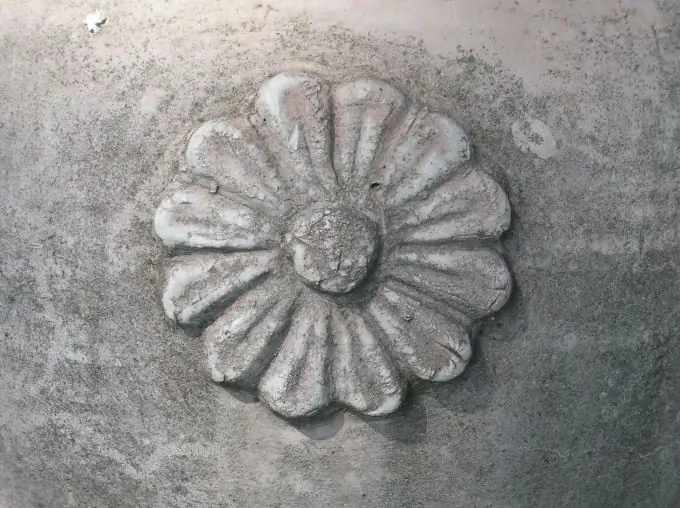Vases, decorative masks, sculptural forms and many other beautiful things can be made from materials such as plaster. This material takes on different shapes and is easy to paint. Gypsum is the oldest building material on earth. Working with plaster is a fun activity that can develop into a serious hobby over time. Classes with him are completely safe.

It is necessary
Gypsum, water, plasticine, knife, cellophane film, wire
Instructions
Step 1
To cast a vase, a decorative mask or a simple bas-relief from plaster, you must first make a model of the future product. A model is a sculptural sketch from which a plaster piece is cast.
Step 2
Try casting the simplest image out of plaster first. For example, a plant.
Step 3
Take a very firm stem of a plant that has bulging buds and leaves.
Step 4
Place the softened plasticine between two layers of cellophane film.
Step 5
Use a rolling pin to roll the plasticine into a layer 1 cm thick. While rolling, lift the film so that it does not stick to the plasticine.
Step 6
Peel off the top of the plastic and place the plant on top of the plasticine.
Step 7
Cover again with foil and roll with a rolling pin over the surface. The plant is evenly imprinted into the plasticine.
Step 8
Remove the film and very carefully remove the plant from the plasticine. Remove the stuck parts of the stem with tweezers. Remove all debris, being careful not to damage the print on the clay.
Step 9
Your plasticine counter-relief is almost complete.
Step 10
Make bumpers. To do this, using careful movements, lift the edges along the entire contour of the plasticine sketch.
Step 11
Prepare an aluminum wire loop of the required size. For this loop, you can hang the finished product on a nail.
Step 12
Prepare plaster of paris according to package directions. The consistency of the solution should be like sour cream.
Step 13
Pour the finished gypsum solution into a plasticine mold with sides. Try not to overflow the molds.
Step 14
Dip the prepared wire loop into the solution.
Step 15
After an hour and a half, when the gypsum solution hardens, proceed to removing the workpiece from plasticine.
Step 16
Fold back the sides to loosen the edges of the casting and remove the plasticine. He moves away very easily.
Step 17
If you wish, you can cast a wall plate out of plaster.
Step 18
To do this, cut flowers from any postcard along the contour and, having moistened it, put the front side on the bottom of a deep plate.
Step 19
Pour the diluted gypsum into a plate with pictures so that you get the right circle.
Step 20
Insert the eyelet and let the plaster set.
21
When the plaster is dry, remove the resulting impression. Trim uneven edges with a knife.






